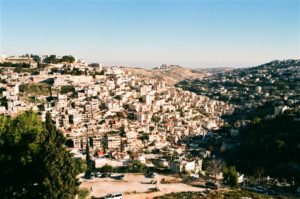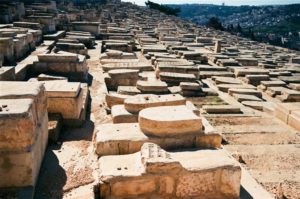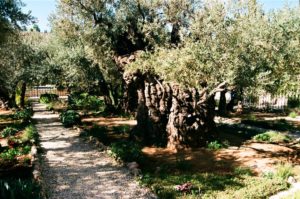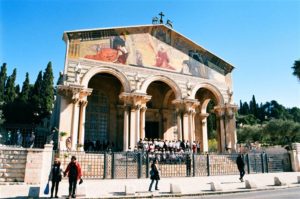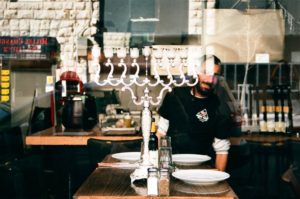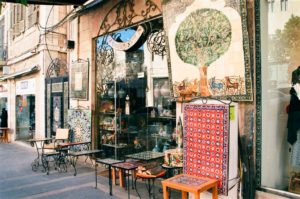A Whirlwind Tour Through the Middle East – A Conversation in History
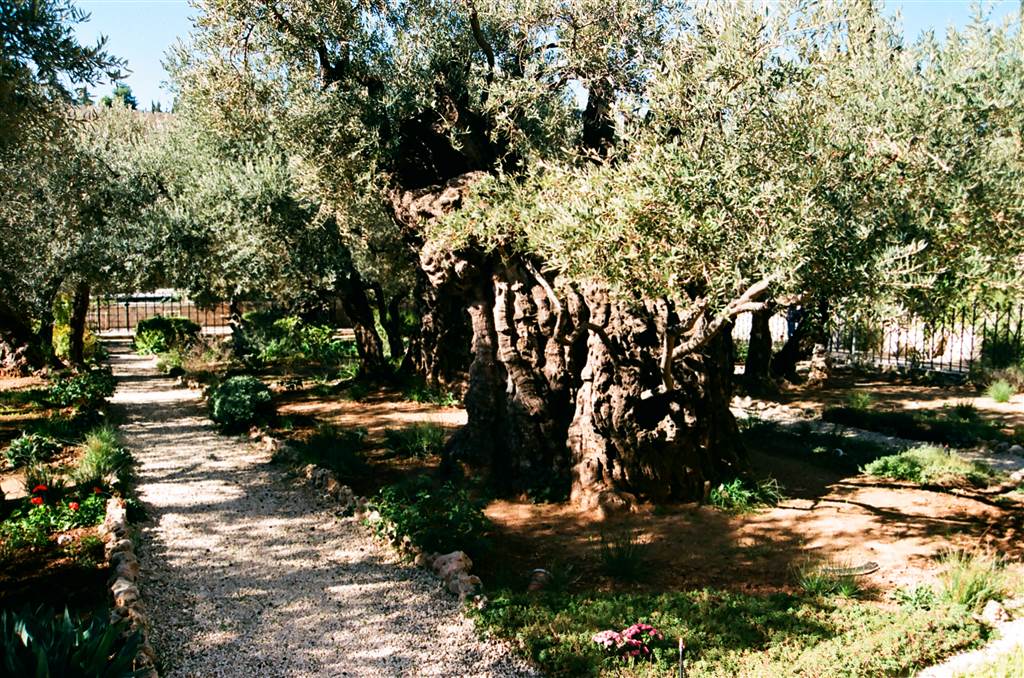
“It is not important where Jesus died but why he died.”
I rose in excitement on my first morning in Jerusalem. There would be a full day of sightseeing, and the Hortus Gethsemane (Lat. The Garden of Gethsemane) was to which I most looked forward.
In the morning we first visited a few vista points on the mounts, where we could view the Old City of Jerusalem. The scenery was beautiful, with the golden city glistening under the morning rays. There was the Mount of Olives (Zechariah 14:4; Matthew 24; see also Acts 1:9-12) right outside the city walls. It was one of the three mounts that that surrounded Jerusalem: the other two being the Mount of Zion and the Mount of Moriah.
We saw rows of tombstones in the outlay of the city. Apparently, the Jews and the Arabs had tombstones that distinguished their identities. The Jews had its signature creamed-colored slabs. The Arabs had dark gray slabs. The bright morning rays enlivened the Golden Dome (Temple Mount) afar. It was the most prominent architecture in the city. A whole day would go before I came close to this most significant site to various faiths, including Christianity.
I had no idea what the Garden Tomb was, until the tour guide pointed us to view the cliff. “Do you see a skull?”
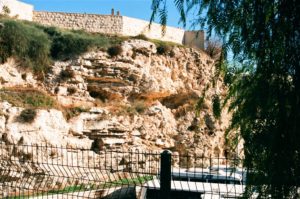
Immediately, I realized that we were at Golgotha (Matthew 27, Mark 15, Luke 23, John 19). The tour guide then explained that, contrary to centuries of established and accepted interpretation, Jesus was not crucified inside the city of Jerusalem (Hebrews 13:12; see also Matthew 27:39 and Mark 15:29). The execution ground was outside the city. We looked at the cliff before us. Surely, the image of a skull was readily recognizable. Furthermore, historians discovered this site with tombs nearby. Therefore the Anglican reading was this was where Jesus died on the cross.
This view of the site of Jesus’ crucifixion was clearly in contravention to the traditional site, which since the time of Roman Emperor Constantine has been the Church of the Holy Sepulchre. The Church of the Holy Sepulchre was located inside the Old City. Adherents to this view argued that the old city of Jesus’ time was much smaller than the walled city that gives the current Old City its shape and boundary. Therefore the location of the Church of the Holy Sepulchre could well be outside the old city then.
The Garden Tomb as a whole was well-kept. Groomed gardens and carefully landscaped botany conveyed its serenity. Yet the arguments were also there, and quite visible too. The tour guide wrapped up his speech, “at the end of the day, it is not important where Jesus died but why he died.” That was a very nice way to conclude the historical arguments, arguments that costed millions to maintain. The Garden Tomb was now managed by a British foundation.
At the conclusion of the tour, we had communion at the vault.
We walked from another vista point down to Hortus Gethsemane. On our way we passed by a cemetery. The Orthodox Church of Mary Magdalene had a beautiful golden dome as well. At another church, someone showed me the thorny plant with which Jesus’ “crown” was made at his crucifixion. Seeing Jesus’ suffering in its physical manifestation did make a cringe of the heart. As with so many sites and artifacts of religious significance on this tour, it put Jesus’ life, ministry and suffering in a context that made the conversation in history live and relevant, perhaps much more so than in the middle class church houses that most Christians attended these days. It occurred to me that the sight of a cross would be quite unbearable to me.
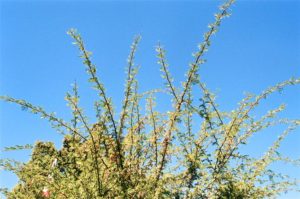
We soon arrived at the Hortus Gethsemane. This was my second-most favorite site in Israel. I still remembered the illustrated book that I read when I was a child, which showed a picture of the garden, and Jesus prayed in that picture with “sweat became like great drops of blood” (Luke 22:44). At the very site (the authenticity of which I refused to question) of Jesus’ prayers, I admired the century-old olive trees that must have been the very witness of Jesus’ agony. The garden confirmed the impression I gathered from the illustrated book that I read.
“Let me be clear, dad, you are not to take any of these thousand-year olive branches for transplantation.” I was fierce with my father, who said, “of course not.”
At the Tomb of David, many Jewish people paid respects to the great king with avid prayers and the Talmud in their hands. The reverence of David from the Old Testament time remained well alive in Israel. Many dressed in Orthodox attire.

At the Dominus Flevit Church (Lat. The Lord Wept) (Luke 19:41-44), one of the older tour members slipped and fell in the marked-off area. He then got up, and just a step or two later, fell again. Although I was not so childish as to laugh at him, at the same time I was not sympathetic. In the past few evenings, he was one of the few members in the tour that complained to the tour manager. He said he was seeing “too much of Jesus.” I thought, “God surely had a way with those who were hard in their hearts” (John 12:40).
“This is the Field of Blood.”
Sara, our translator, pointed me to the Field of Blood outside of the Dominus Flevit Church. After Judas hanged himself, the priests used his blood money of thirty silver pieces to buy the potter’s field to bury strangers (Matthew 27; see also Zechariah 11:12-13). The field of blood laid before us, and really it seemed like a piece of abandoned land, in direct contrast to the golden glimmer of other parts of Jerusalem. It was a point of sadness for me on this tour. Judas’ betrayal of Jesus was unforgivable, and that was why he ended his own life. Yet was he not also part of the plan that God had for the human beings’ redemption?
At the evening I sat with my few servings of hummus, thankful that I have seen so much of Jesus that day.

